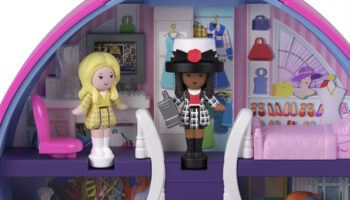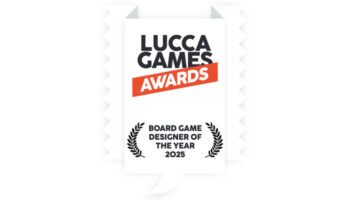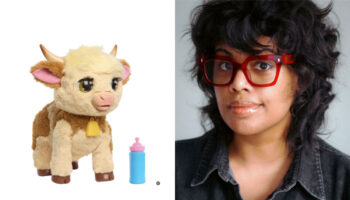Former Fisher-Price and Hasbro R&D man Tom Mason discusses pant-wetting hits… And winning the I.D.I.O.T.

Thank you so much for making time, Tom. You weren’t the easiest man to track down, it has to be said!
Really?
Yeah. We sent flying monkeys out at one point… It sounds like you got out of toys quite a while ago?
Yes, I did. It was – let’s see… 23 years ago, actually.
You’ve been retired for 23 years? Wow. Well, thanks again – I know you still keep busy. So! Let’s start at the beginning: how did get into the industry, Tom?
I studied industrial design at the University of Illinois. My first job was in packaging in Chicago; mostly industrial packaging. Then I got into consumer packaging, and then I was hired by a company that doesn’t exist anymore – Western Publishing Company.
What did they publish? Games?
Yes, books and all kinds of classic games; it was like a third-tier game manufacturer… So Whitman games and puzzles; some skill craft science sets, magic slates. They also used to publish Golden Books, Little Golden Books. They were based in Racine, Wisconsin. They hired me as their manager of package design – but they only had one designer!
Ha!
So I happened to be there with some management experience when the Research and Development Manager left. He’d been in charge of all the product development for the non-book division. That was the smaller of the company’s two divisions. So I was chosen to replace him – and that got me into the edges of the toy business. And ultimately Mattel bought Western Publishing.

That would be around 1982?
Right. And actually, when I was in London for the Toy Fair, I was walking around Piccadilly Circus… And do know the old saying? That if you stand there long enough, you’ll see everybody in the world go by?
Yes! I don’t know who said that, but I know the phrase.
Well, it happens that I saw a guy by the name of Tom Oller walk by. A white-haired guy who also used to go to the University of Illinois. It happened that he used to work at Playskool for a time, and was then working for Fisher-Price. He said he was looking for a Director of Design and asked if I’d like to work for him. I said, “Well, give me a call when we get back to the US and we’ll talk.” He did and we did! So I ultimately started with Fisher-Price at that point. Eventually – after he left – I ended up replacing him. So it was one of those things where I kind of did it by mistake. Ha! Piccadilly Circus. Yeah…
So you went to Fisher-Price in ’82… You were there for a long time?
For about 16 years, I think. Eventually, I became Senior Vice President of Research and Developmemt. But then Mattel bought that company as well!,
You’ve been bought twice by Mattel?
Yeah. Ha! Not too many people have that distinction! I had a lot of contacts at Mattel and already knew a number of people there. After a period of time, though, we got a new president – he was my new boss. He came in and more or less said, “I’d like you to retire”…

Oh!
I asked if I had a choice and he said no. Ha! He wanted to bring his own guy in, which I can understand. And off I went; that’s when I retired. But two weeks later I was working for Hasbro in the same job at Playskool. I got a couple of years out of them. Then they had a purge which I think they did every two years… That’s how it seemed. So I retired again, this time from Hasbro.
And while you were at Fisher-Price, Tom, what kind of toys were you developing?
Oh, boy, this is challenging my memory! Things like Puffalumps, Rescue Heroes, Little People, of course; the little peg people. But then, one of the most interesting products that I ever worked on was also a huge failure in the marketplace. It was called PXL2000 – it was the world’s first camcorder for kids. It utilized a 90-minute audiocassette to record black and white video and audio. Out of that 90 minutes, we got about seven minutes of actual video. And it was a really crude pixelization of the image. You’d be lucky to recognize somebody on it!

Wow. Groundbreaking, though. I mean… It may not look it now, of course, because we’ve all got unbelievable cameras in our pockets! But back then…
Right. Unfortunately, we developed it with a partner in Japan at a time when the yen was going crazy against the dollar. As a result, instead of initially retailing for $99, it was retailing for $199. It also included a small black and white TV. It was unsuccessful but – let’s put it this way – it won critical acclaim. Ha!
It was a critical success! Ha!
Ha! Yeah… It made a lot of news; that’s about all it did.
What a terrible shame. Always interesting to hear about brilliant things that underperform, though. And when you flew around the world looking for stuff, Tom, how did it used to be? I mean: when you saw something, you might think, ‘This looks like a great idea’; ‘This looks like not such a great idea’…
‘This looks like a critical success!’
Ha! Yes! What was your process? How did things progress?
Well, frankly, the initial question was always: “Has there been anything close to this before? Or is it – based on what we know – truly fresh? If it passed that test, we’d take it in and do an awful lot of serious study. That ran the gamut of building prototypes, testing with kids, doing focus groups with mums. You know, the qualitative research. If it continued to survive after all of that, we’d then go to quantitative research, especially if it was a large investment.

Quantitive research being numerical data; qualitative being non-numerical…
Right. And actually, we developed a testing technique called QualiQuan, which combined qualitative and quantitative if it involved media, advertising on TV, say. We might even produce a commercial for theatre testing. There were a lot of directions that it could go. One of the unique things that Fisher-Price had was a play lab… They still have it to this day.
And what was the role of the play lab?
Preschoolers would come in for a two-week period and sit down with the teachers. They’d introduce a new toy concept to them. And we’d observe them and play with them and see what they do with it. Usually, it was in a prototype form. We’d see a lot of expensive prototypes broken in the hands of two-year-olds. Ha! But that happens; that’s one of the risks.
Yes, that’s part of it, I guess. And presumably you’d have levels of approval for each item?
Right. And you know, what would often happen – if the child REALLY liked what they were playing with – is that they’d wet their pants… Literally wet their pants. So we coined a term for it. If it was a really good idea, it’d be a pant-wetter. Ha! I mean, it’s an uncontrollable reaction…
Absolutely! You know, I’m trying to place where that fits in today’s slightly more PC world…
Well. Being at my age, we can have a pant-wetter too!
Ha! Well… There’s no answer to that!
Well, yeah… What goes around comes around.
Funny! Ha! I’ve not really thought about it, but I suppose kids doing that is a fairly good measure of their excitement.
Yeah. Especially if they can’t verbally articulate it.

Gosh, that’s fascinating. And in that respect, Tom, would you have said that your process was more of an art for you, or more of a science?
Well, initially it has to start as an art, I believe… As a gut-level reaction based on history, based on knowledge of what’s going on in the industry. And then you follow that up with science to verify it.
You’re looking to prove or disprove your instinct?
Right. And you want to watch the bottom line too. At some point, you reach a level of investment that may not be recoverable. So you have to be cognizant of that and try and cut it off if it’s going too far in the wrong direction. So one of those things where it’s a combination of art and science.
I was just thinking, too, that there’d be a point, presumably, at which you’d have that gambler’s psychology at play… Where you’ve already invested X amount in something so you chase your losses. But that thinking leads to madness in the end…
What’s changed now, of course, is the rapid prototyping. It used to take a long time to handbuild prototypes. I mean… My department was about 125 people; mostly designers and model makers. We had a very extensive model shop: as I remember, there must have been 20 or 25 guys down there building prototypes. It took a long time to get it out the other end. Nowadays, though, with rapid prototyping machines and techniques, the timeline’s much shorter.
And correct me if I’m wrong, but I think you were at Fisher-Price until 1997. But in ’96, you were given a Mini I.D.I.O.T. Award at the UK Inventors Dinner…
Right. In ’96… I’d gone to the dinner several times before that. In fact, I think I was given the award because I kept showing up. I think they felt badly for me!
Ha! You just looked at them with hope in your heart and tears in your eyes?
Yeah, exactly!

Oh, you’re too modest. You were in good company that year: Mike Meyers, Paul Snyder, Mike Lyden, Tom Kremer… Pretty big-hitting names in the industry.
Unlike me!
Well, what are you going to say?! You strike me as a very modest man; you’re going to deny it! Do you remember getting the award?
Oh, yes, I do… I don’t remember the restaurant necessarily, but I do remember the night. I was very honored. It was always a great dinner and great fun to see everybody. The camaraderie in the toy industry is something to really cherish. I made a lot of good friends and had a lot of good times.
Lovely. And in that respect, after Fisher-Price, you did – what? Two years at Hasbro?
About two years. Yeah.
And then you retired from the toy industry?
I did. Because, you know, my wife used to say, when I’d come home, that I’d go gray eventually. And I don’t know… It was one of those comments that would make me think: is the stress really worth it? And I think the conclusion that I came to was, no, the stress was not worth it. And let’s just be done with it.
Fair enough!
So we moved to Raleigh, North Carolina and had a great run. We were there for 20 years. I did some part-time work for Toyota. I was in furniture sales for a while, just to have something to do; to keep busy. I did consulting for a little bit. But that again was getting back into that stress zone.

What keeps you busy today, Tom?
I’m a shuttle driver for a Toyota dealership. I drive service customers. That’s quite a nice job for an old guy like me. I work four days a week. Of course, the compensation isn’t anywhere like that! Ha! But I’m living comfortably.
And I noticed on your LinkedIn profile your status is… Fisherman. Golfer. Retired.
That’s my main job, yeah! I enjoy it. In fact, for a while, I was working as a starter at a golf course; someone who says, “Okay, you’re next. Take tee number one” or whatever. That was an interesting introduction to people with the added benefit that I got to play free golf!
Ha! Well, it’s quite interesting to me… Your post-retirement jobs all sound like you rather enjoy meeting people and keeping busy rather than slaving away in charge of a team of 125 and getting stressed.
Right. Exactly.
Well, listen, this has been a delight, Tom. I’ve enjoyed it enormously. Thank you so much for making time; I’m tremendously grateful.
–
To stay in the loop with the latest news, interviews and features from the world of toy and game design, sign up to our weekly newsletter here























